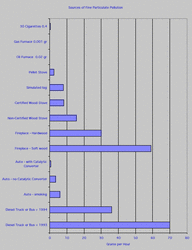All I can add is to report my experience with a traditional brick and mortar fireplace before and after a Pacific Energy Vista Insert was installed. Pre-insert, whenever I had a fire in the fireplace, the living room where the fireplace is located would get warm and the rest of the house would get cold. I had to shut off the upstairs heating zone (we have forced hot water baseboards and a separate zone for each floor) otherwise the upstairs heat would run continuously. I’m no heating expert, but I have to assume this was because the heat was being sucked out by the fireplace (or maybe the cold air was being sucked in). With the insert, we have a fire and it heats the living room nicely and the rest of the first floor pretty well. Some heat finds its way upstairs, but the upstairs zone runs pretty normally, cycling on and off as needed, rather than running contiuously.
Theres a difference in burning a fireplace with a modern heating system running and in the old days when the only source was a fireplace. Just heating a home with a fireplace/fireplaces with no other heating source will work but you would go through a lot of wood. The device mentioned earlier in the thread would help cut down on the amount of wood.
This of course cant compete with a new epa wood stove.



